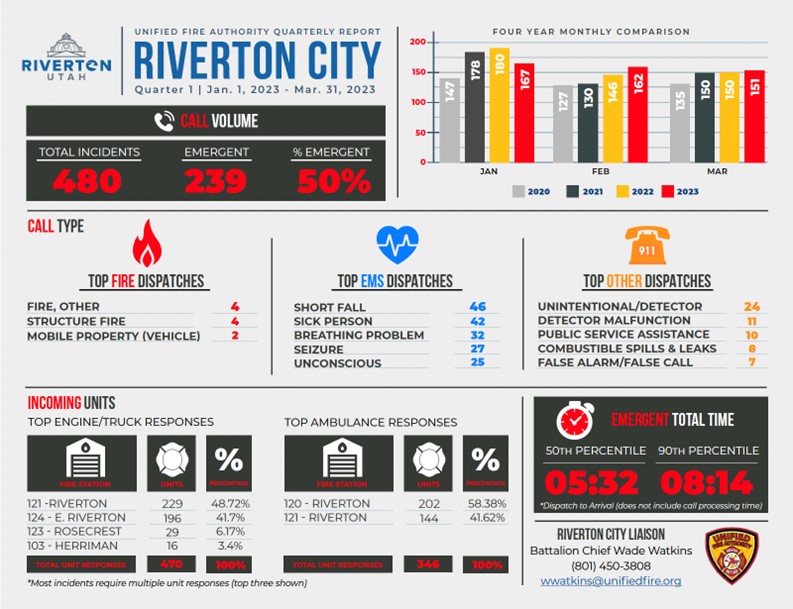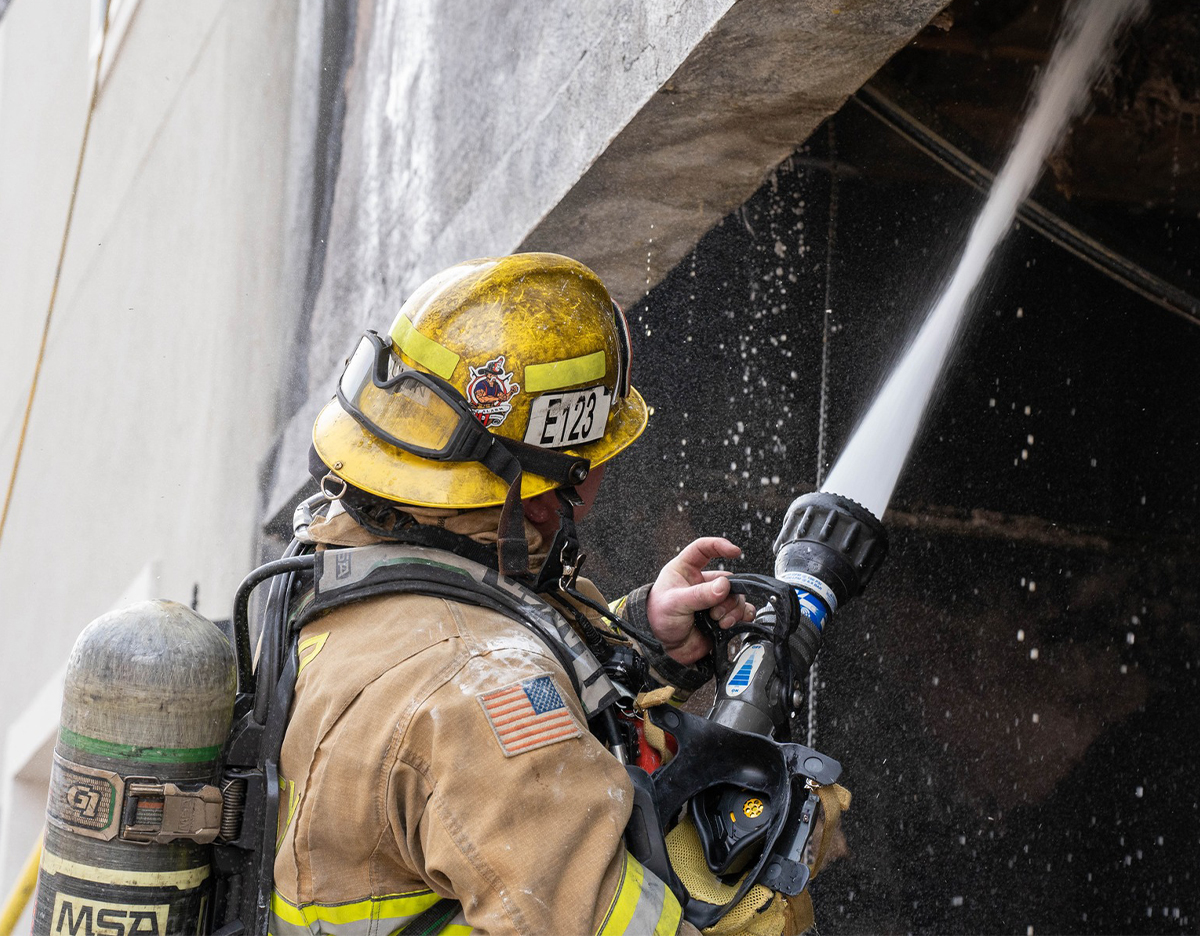 By Chief Wade Watkins
By Chief Wade Watkins
On average, Riverton’s fire crews respond to 2,000 plus emergency incidents each year within the boundaries of Riverton. That number breaks down to about 167 incidents per month and six per day. Riverton’s firefighters are all either licensed paramedics or EMTs in addition to being certified firefighters. Medical emergencies account for roughly 80% of the responses with the remaining balance falling into the category of fires and miscellaneous responses of many different types. Responding to these emergencies as an effective response force is key to reducing Riverton’s vulnerability related to unwanted fires and other emergencies.
An incident for our purposes is defined as whenever the public calls for emergency support utilizing 911. Generally, the public calls 911 with the intention to get emergency help where it is needed. Many times, the call is initiated early in an emergency incident. These calls happen fast, and, in many cases, information is limited due to the nature of the situation.
Emergency dispatchers are trained to get the appropriate help coming as soon as the type of emergency incident is received. The information shared from the caller to the emergency dispatcher is shared with responders when they are notified. These incidents range from a simple ground level fall that requires an EMT or paramedic to assess the patient’s condition to a large-scale apartment complex fire with immediate fire suppression and searches required.
 The priorities of these responses are centered around Life Safety, Incident Stabilization and Property Conservation. Every emergency response is focused on these priorities. An example of this that displays these applied priorities in sequence is a fire response. If a citizen calls 911 and reports that they see fire involvement in a neighbor’s home, the appropriate response will be sent to respond to the emergency. Addressing the priority of life safety first, the first arriving fire engine or truck will take command and make the decision to send firefighters to fight the fire or address an imminent rescue and, in some circumstances, accomplish both simultaneously focusing efforts on the safety of all occupants.
The priorities of these responses are centered around Life Safety, Incident Stabilization and Property Conservation. Every emergency response is focused on these priorities. An example of this that displays these applied priorities in sequence is a fire response. If a citizen calls 911 and reports that they see fire involvement in a neighbor’s home, the appropriate response will be sent to respond to the emergency. Addressing the priority of life safety first, the first arriving fire engine or truck will take command and make the decision to send firefighters to fight the fire or address an imminent rescue and, in some circumstances, accomplish both simultaneously focusing efforts on the safety of all occupants.
The other tasks that support the priority of Life Safety & Incidents Stabilization are ventilation and search for life, controlling utilities and establishing a water supply ensuring there is enough water to control the fire growth. Property Conservation is supported through overhauling the affected areas and preventing further damage thus salvaging any valued property.
Understanding the “whys” behind the response is important, so I’ll share an example. The response to the average house fire within Riverton requires three fire engines, one ladder truck, one medic ambulance and a battalion chief, at a minimum. The necessary work is divided between all the responding crews. For this example, please assume each responding apparatus is staffed with four firefighters. The below is what the assignments may look like; the incident commander (IC) will assign the tasks as needed to support the incident needs.
Examples of tasks, priorities, and actions during fire suppression:
1st arriving engine: Incident command, determination of strategy and first line on fire or imminent rescue actions to save life.
2nd arriving engine: Hydrant connection followed by a second line for fire suppression and support rescue as needed.
3rd arriving engine: Back up suppression line, initial search for life, second search for life (very thorough).
4th arriving ladder truck: Forced entry, ventilation, control utilities, open access egress, (RIT) rapid intervention team for firefighter rescue, option for heavy rescue support.
6th arriving medic ambulance: Medical on scene support for victims and firefighters.
7th arriving Battalion Chief: Ongoing incident and resource management until the incident is safely concluded.
As you can see from the above tasks and priorities, decisions supported by capable and well-equipped firefighters support effective responses to our community’s needs. Matching resources to the risk profile supports effective responses with better outcomes.
If you have any questions about how the Unified Fire Authority serves Riverton City, please don’t hesitate to reach out to me at wwatkins@unifiedfire.org.
Press / Media Contact:
pio@rivertonutah.gov
801-208-3189
